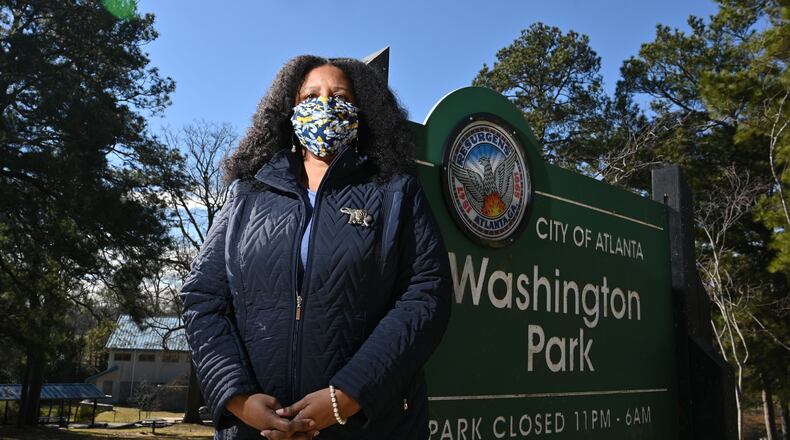In the 1920s, Black residents who wanted to swim, play tennis or simply enjoy an afternoon at the park in Atlanta had just one option: Washington Park.
What began as the first recreational greenspace for African Americans in the state of Georgia would later became the anchor for a flourishing Westside community. As the first planned Black suburb in the city of Atlanta, the Washington Park neighborhood, located west of Vine City and just south of Bankhead, played an outsized role in the development of the Westside as a cultural, educational and political hub for Atlanta’s Black community.
“The establishment of Washington Park really formed the foundation of the Black middle class” in Atlanta, said CJ Jackson, the chair of The Conservancy at Historic Washington Park, a nonprofit organization that advocates on behalf of the community.
Today, Washington Park residents are working to preserve and highlight not only the neighborhood’s decades of rich history, but also what Jackson calls its “living history” — the special people and places in the community that provide a critical link to the past. To help keep that history alive, the conservancy is partnering with the University of Georgia’s Hargrett Library to create an archive that will document the history of Washington Park and the surrounding community.
“This relationship will include not only the preservation of documents and photographs, but will involve UGA students in the robust history of the park and evolution of the neighborhood it supports,” said Katherine Stein, the director of the Hargrett Library. The archive should be available to the public for research by the end of March.
Westside residents who have photos, documents or other personal family items will be able to submit them to be part of the archive, Jackson said.
“We want to communicate to folks that there’s a mechanism where you can save your family’s story and it will be safe, pretty much in perpetuity,” she said.
The Atlanta Preservation Center has also partnered with the neighborhood on preservation efforts. The conservancy is also working to install more historical markers around the neighborhood, and is the holder of a 2015 “visioning plan” for Washington Park that included recommendations for preserving the historic fabric of the community, which is on the National Park Services’ registry of historic districts.
Credit: HYOSUB SHIN / AJC
Credit: HYOSUB SHIN / AJC
David Mitchell, the executive director of the center, said the new archive is especially important because “there is a humanity that has to be preserved as well.”
“You have the human element that at times can get lost,” he said.
The park that became the neighborhood’s namesake opened just over a century ago, in 1919. The completed park included a dance hall, pavilion, tennis courts and swings, according to neighborhood leaders. At the time, Ashby Street — now Joseph E. Lowery Boulevard — served as a “color line” separating white and Black neighborhoods.
Black businessman Heman Perry, who Jackson said is “one of the most overlooked historical individuals when we talk about the story of Atlanta,” developed the neighborhood in the mid-1920s. Over the next several decades, it grew into a thriving community for Atlanta’s Black middle class, home to businesses, hospitals, and schools.
Today, there are Washington Park residents who have lived there since the 1940s, and others whose families go back two or three generations.
“We want to make sure that the young people that use that park and are in the neighborhood understand that they come from people who have done great things, and that it is up to them to steward that into the future,” Jackson said.
The neighborhood also faces the threat of gentrification. The Atlanta Beltline is set to go through the western edge of the neighborhood, which could bring an influx of development. Home values in Washington Park have gone up 28% over the past year, according to Zillow.
Jackson said many older Black homeowners are growing increasingly concerned about predatory investing, a practice in which investors coerce longtime residents into selling their homes, often at lower prices than the properties are worth.
“This is not something that just can be discovered,” Jackson said of the neighborhood. “There are people who are alive who made incredible strides, and then those who are not alive, a lot of their family are still living in Washington Park.”
Historic preservation isn’t the only thing Jackson’s organization is focused on. During the COVID-19 pandemic, the conservancy has launched a program to help provide food, pet food and COVID-19 resources to seniors in the community.
“Our focus through the rest of 2021,” Jackson said, “is to do whatever we can to help people where we are.”
About the Author
The Latest
Featured



